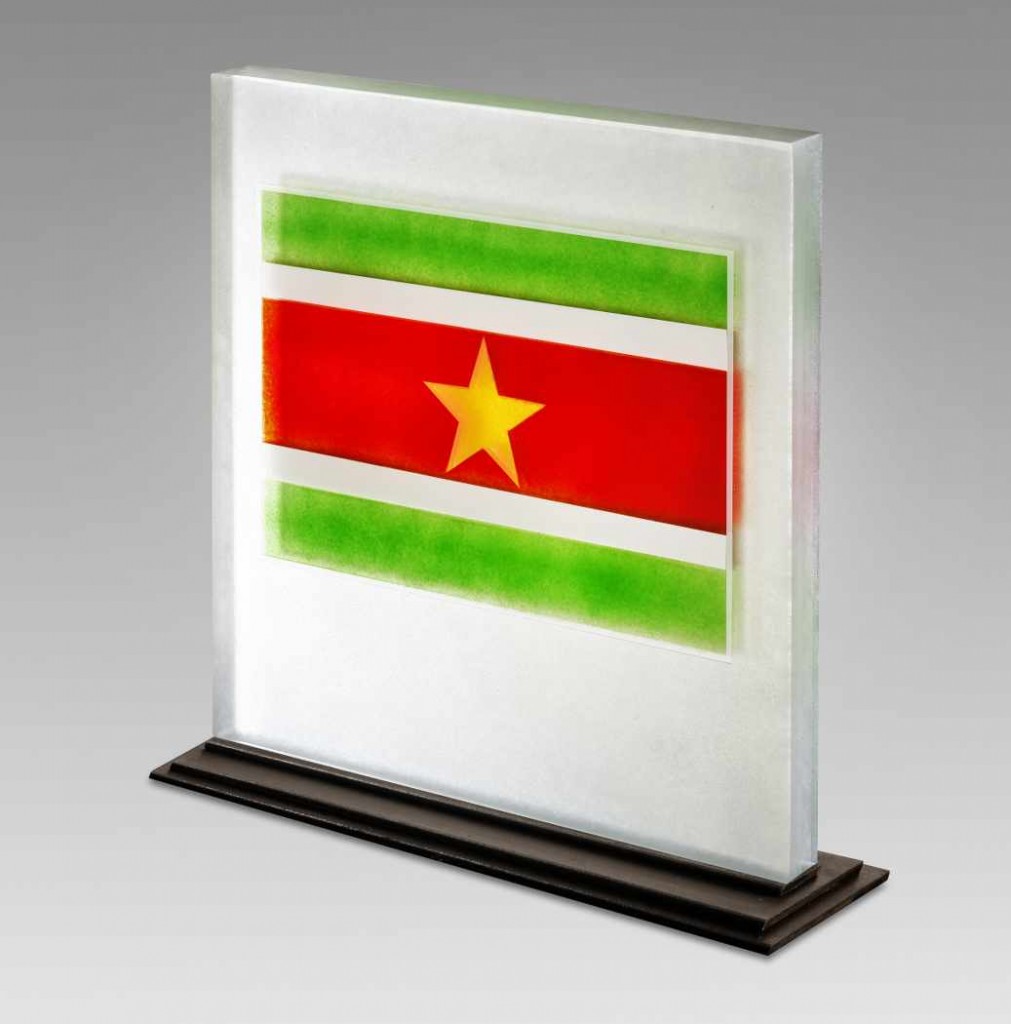 Return the 2011 summary
Return the 2011 summary
 Work available
Work available
Surinam
2011
50 x 50 x 4,4 cm | 29 kg
Fused multilayer glass with inclusion of pigments ![]()
Le drapeau national du Surinam fut adopté au moment de son indépendance en 1975.
L’histoire du pays remonte à l’arrivée des premiers Amérindiens, les Arawaks et les Caraïbes. Colonisé par les Néerlandais en 1613, puis occupé par les Britanniques jusqu’au traité de Bréda (1667), le Surinam fut adjugé aux Hollandais en échange de la Nouvelle-Amsterdam, future New-York.
La Guyane hollandaise, comme on l’appelait, se développa grâce au travail des esclaves.
Devenue partie intégrante des Pays-Bas, le territoire prendra le nom de Surinam en 1948 et n’accèdera à l’indépendance qu’en 1975.
The star represents the unity of all ethnic groups and cultures that coexist on its territory. It is traditionally interpreted as an exhortation to the altruism and self-sacrifice that the people must demonstrate in their march towards progress. Green evokes the fertility of meadows and forests. The red band symbolizes love and progress, the white represents justice, freedom and peace. As for the yellow of the star, it is the symbol of hope and prosperity.
For the record, red and green are the colors of the political party which worked for independence.
Click on the images to zoom
Official name: Republic of Suriname
Continent: America | Capital: Paramaribo
Area: 163,270 km2 | Population (2010): 520 050 habitants
Official language: néerlandais | Currency: Suriname dollar
Border countries: Brésil, Guyana, Guyane | National holiday: 25 novembre
Motto: Justice, piété, foi (ou loyauté)
Member of the United Nations: 4 décembre 1975
Member of UNESCO: 16 juillet 1976


